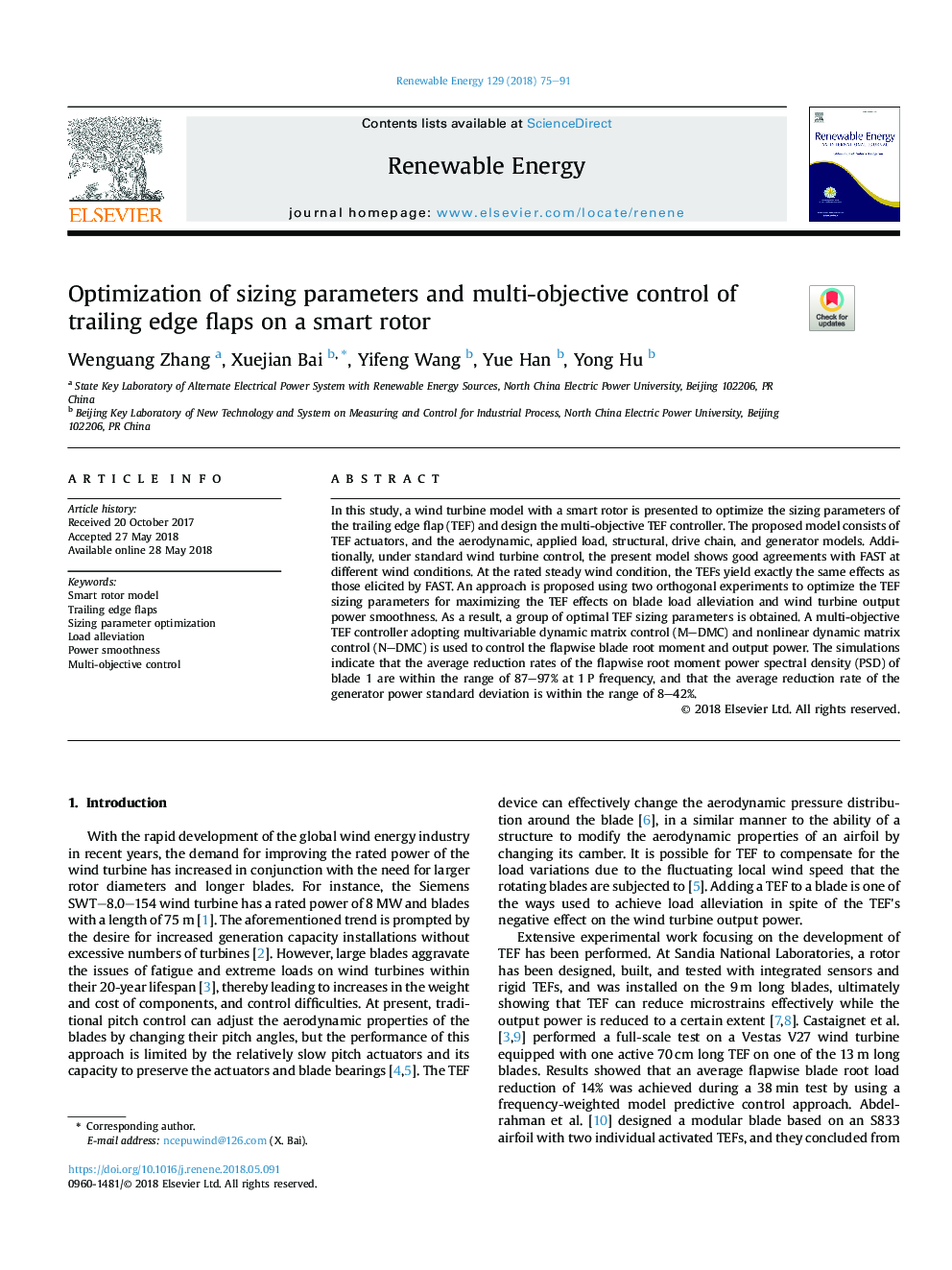| Article ID | Journal | Published Year | Pages | File Type |
|---|---|---|---|---|
| 6763914 | Renewable Energy | 2018 | 17 Pages |
Abstract
In this study, a wind turbine model with a smart rotor is presented to optimize the sizing parameters of the trailing edge flap (TEF) and design the multi-objective TEF controller. The proposed model consists of TEF actuators, and the aerodynamic, applied load, structural, drive chain, and generator models. Additionally, under standard wind turbine control, the present model shows good agreements with FAST at different wind conditions. At the rated steady wind condition, the TEFs yield exactly the same effects as those elicited by FAST. An approach is proposed using two orthogonal experiments to optimize the TEF sizing parameters for maximizing the TEF effects on blade load alleviation and wind turbine output power smoothness. As a result, a group of optimal TEF sizing parameters is obtained. A multi-objective TEF controller adopting multivariable dynamic matrix control (M-DMC) and nonlinear dynamic matrix control (N-DMC) is used to control the flapwise blade root moment and output power. The simulations indicate that the average reduction rates of the flapwise root moment power spectral density (PSD) of blade 1 are within the range of 87-97% at 1â¯P frequency, and that the average reduction rate of the generator power standard deviation is within the range of 8-42%.
Related Topics
Physical Sciences and Engineering
Energy
Renewable Energy, Sustainability and the Environment
Authors
Wenguang Zhang, Xuejian Bai, Yifeng Wang, Yue Han, Yong Hu,
